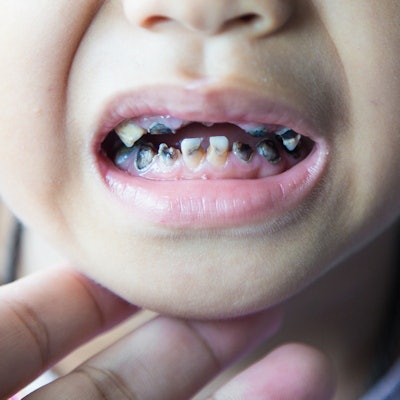
The COVID-19 pandemic exacerbated oral health disparities in low-income and racial/ethnic minority children, according to research published April 15 in the Journal of Dental Research.
Researchers from Kennesaw State University, Virginia Commonwealth University (VCU), and the U.S. Centers for Disease Control and Prevention used a simulation model to estimate the impact of the closure of many dental offices and school sealant programs in March 2020 on the incidence of first permanent molar caries and loss in quality of life of low-income and minority children.
They found significant increases in untreated cavities and a resultant loss in quality of life due to a reduction in dental treatment and sealant delivery among low-income children from March 2020, continuing through February 2024. What's more, the decreased quality life of children from low-income families was about twice as high among Hispanic children and non-Hispanic Black children than non-Hispanic white children. Without intervention, these disparities will continue, according to a statement from VCU (J Dent Res, April 15, 2022).
However, increasing sealant delivery through dental offices and school sealant programs could mitigate these disparities, according to the researchers. They estimated that providing sealants to 40% of children from low-income families would bring their cavity status to pre-COVID levels, and it would eliminate racial/ethnic disparities in excess cavities.
"Because school sealant programs often focus on selected grades (e.g., second grade) to capture children most likely having newly erupted molars, some children may have missed their opportunity to access this important preventive service," VCU said in a statement. "As a result, extra effort will be needed to reach these overlooked children."
The researchers noted that untreated cavities are the most prevalent chronic disease of children in the U.S. These cavities, which disproportionately affect poor and racial/ethnic minorities, affect well-being and school performance.
"Dental sealants can prevent up to 80% of cavities, and school sealant programs are an effective way to reach millions of children who are at higher risk of cavities and who have less access to dental care," VCU said.



















